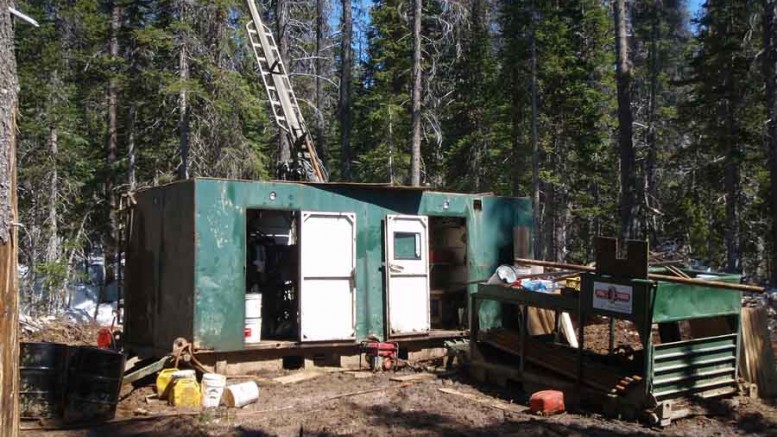VANCOUVER — To kick off a conference highlighting exploration and mining in B.C., the Yukon and Alaska, the first morning at Roundup 2013 was dedicated to an overview of all things geological in the three regions. And while the details differed, the speakers bore a similar message: 2012 could not meet the high bar set in 2011 — when exploration dollars spent and claims staked both hit records highs — but it was a good year nonetheless.
Bruce Madu, director of mineral development within B.C.’s Ministry of Energy, Mines and Natural Gas, started with a sprint through his province’s year in minerals.
B.C. is Canada’s largest copper producer, the country’s only molybdenum producer and its largest coal exporter. Mineral and coal production was down slightly relative to 2011, but the total value of mine production still came in at $7.4 billion. Coal contributes two-thirds of that value, while copper contributes one-sixth.
Twelve mines are in production in the province, ranging from large operations like Teck Resources’ (TCK-T, TCK-N) Highland Valley copper-moly mine to seasonal producers that exploit small, high-grade resources. One mine was added to the roster over the year: the New Afton gold-copper mine entered production in June. It is still ramping up to its full capacity of 11,000 tonnes per day, but its start-up is notable for using block caving to mine a large, deep resource. Other B.C. projects with high-grade resources at depth are watching New Afton with interest.
The roster is set to expand again with two mines under construction in B.C.: Thompson Creek Metals (TCM-T, TC-N) is building the Mount Milligan copper-gold mine near Prince George, and Imperial Metals (III-T) is developing the copper-gold Red Chris mine near Dease Lake.
Seventeen other projects worked through various stages of evaluations, including two that saw some of the biggest exploration programs in the country in 2012. Almost 70 earlier-stage projects saw exploration programs of some sort.
Unfortunately, at the other end of the scale, many juniors couldn’t access funding in 2012 because of the depressed equity markets, so many small or early stage projects sat idle through the year.
The exploration program at New Gold’s (NGD-T, NGD-X) Blackwater project was the largest in the province — in fact, Madu thinks it may have been the largest program in the world, with 236,600 metres of drilling in more than 800 holes. The holes confirmed the continuity of mineralization in the main zone, extended the zone to the north and identified a new silver zone to the northwest. New Gold completed a preliminary economic assessment (PEA) of the project in September based on a 60,000-tonne-per-day open-pit mine, which means the company can start permitting.
The province’s second-largest exploration program took place not far away, at Pretium Resources’ (PVG-T) Brucejack gold-silver project. More than 100,000 metres of drilling increased Pretium’s confidence in the resource at Brucejack, especially since 41 intercepts returned grades better than 1,000 grams gold per tonne. In 2013 the company aims to complete a feasibility study and take an underground bulk sample.
There are also highlights from dozens of smaller B.C. exploration efforts in 2012.
At the Ootsa project, Gold Reach Resources (GRV-V) completed 45,000 metres of drilling and found prospective geology, promoting Madu to describe the project as “a great geographic play.”
Galore Creek — the massive project joint-ventured between Teck Resources and NovaGold Resources (NG-T, NG-X) — saw a large drilling campaign in 2012. NoveGold is seeking a buyer for its 50% stake in the property.
Seabridge Gold (SEA-T, SA-N) and Pretium Resources are investigating their options to combine their adjacent KSM and Snowfield projects. Manu said he wouldn’t be surprised to see some “significant shifts in terms of development and resources at those projects” in the coming year.
Spanish Mountain Gold (SPA-V) advanced its namesake project, which is the first recognized occurrence of a sediment-hosted gold deposit in B.C. A PEA of the project’s 3.2 million measured and indicated oz. and 3.7 million inferred oz. produced positive results.
It was a good year for polymetallic projects in the province, with four mines working through the mine-evaluation process. One takes place at Harper Creek, where Yellowhead Mining (YMI-T, YMI-V) completed a feasibility study contemplating a 70,000-tonne-per-day operation. Another is Imperial Metals’ Ruddock Creek zinc-lead project, where a PEA is expected soon.
On the nickel front, First Point Minerals (FPX-V) advanced its Wale, Orca and Decar project, the latter of which is a joint venture with Cliffs Natural Resources (CLF-N). First Point focuses on a particular nickel-iron alloy that can be mechanically separated, eliminating the need for smelting.


Be the first to comment on "Roundup 2013: What’s next for BC?"